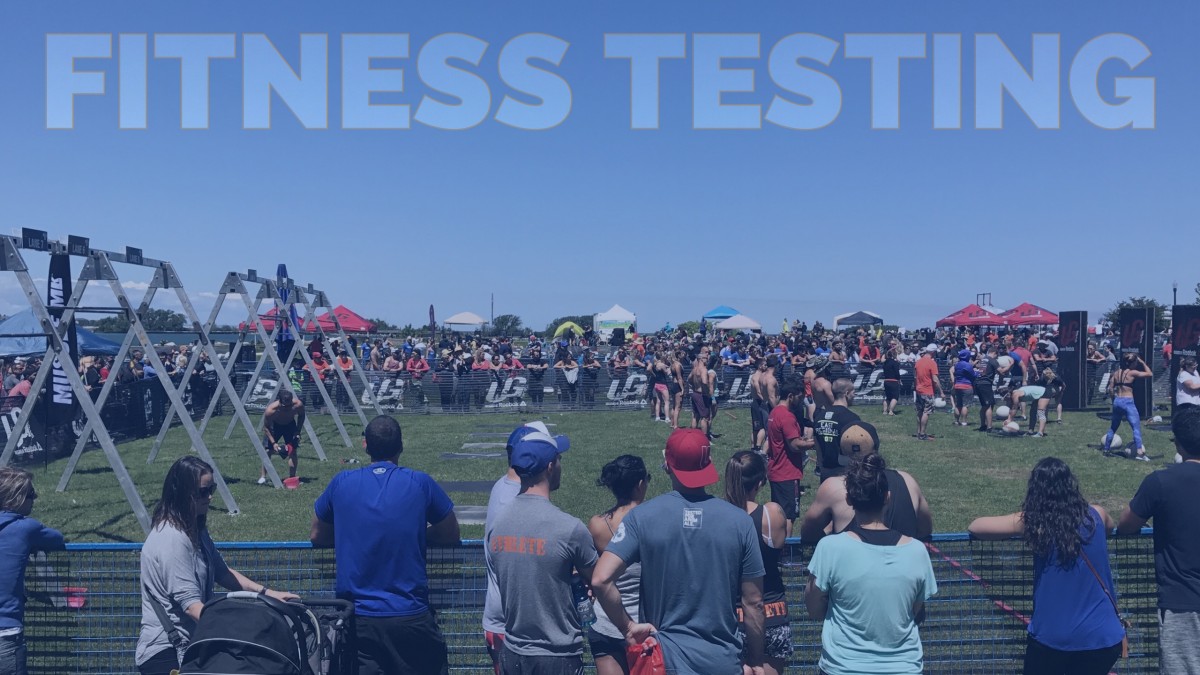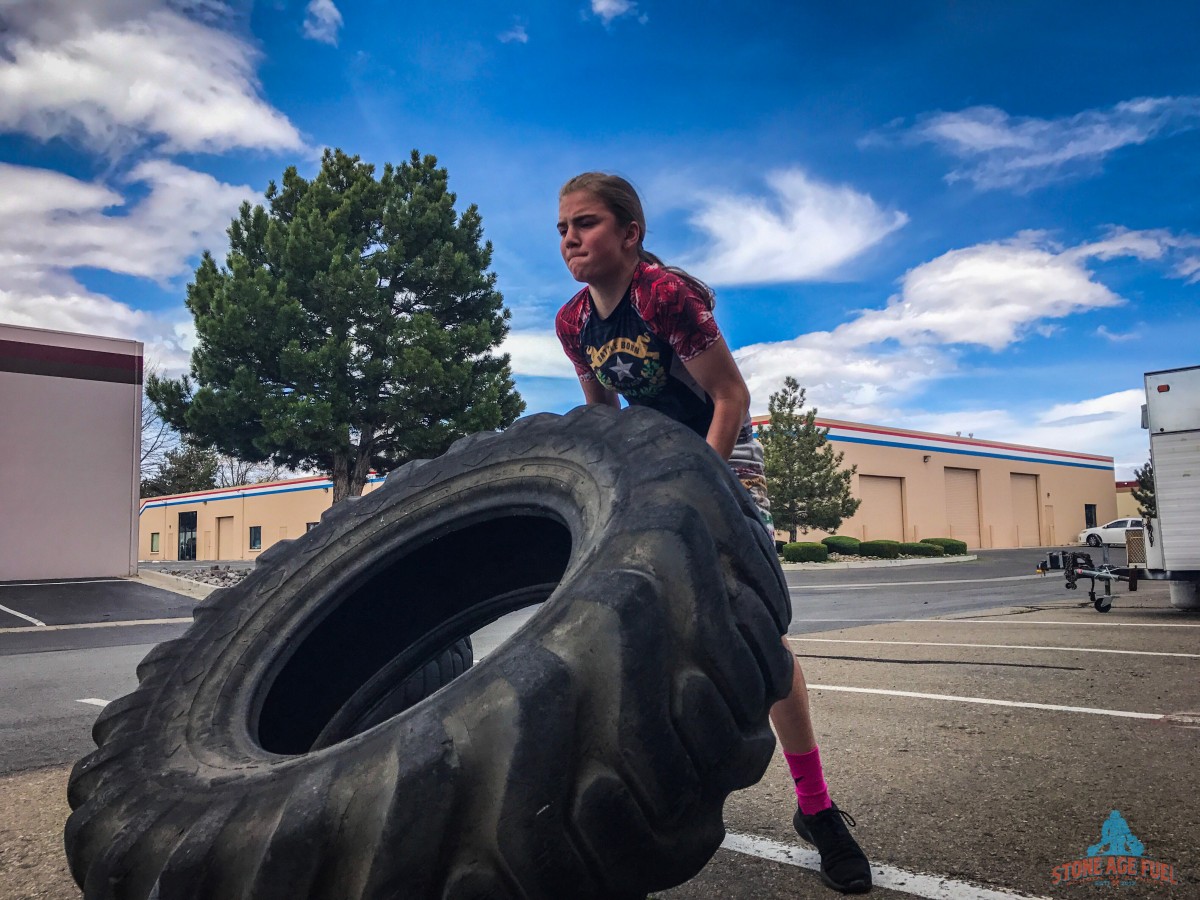StoneAgeFuel initial Fitness Testing
Our clients often ask the question why: Why do we put you through a series of fitness tests when you first walk through our doors, regardless of whether you have lofty or humble fitness goals?
Isn’t fitness testing expensive and convoluted and just for elite athletes?
Why is a medicine ball sprint, a pulling test, a pushing test, a squat test, a hinge test, a one-mile run test etc… important?
The first question is the easiest to answer:
Our initial testing is made up of simple tests—400 m ball run, 1-mile run, max pull-ups, max push-ups, max 1RM deadlift, push press, 75 wall ball shots and Tabata squats—that require no sophisticated administration or equipment and is designed for the average person (but it also effective for elite athletes).
Think about it like finding directions via google maps. What two pieces of information are required?
Where are you now?
Where do you want to go?
The same is true for your fitness: Our fitness rating allows you to work with your coach to come up with achievable fitness and health goals (aka where do you want to go), and is especially useful if you currently have no clue what your physical abilities are (aka where you are now), which is the case for many of our clients.
It doesn’t matter whether your goal is to walk 400m without stopping or a 500-lb. deadlift. The point is you and your coach work together to develop an effective program, which involves knowing your current fitness ability.
The second question is much more difficult to answer:
More specifically, it’s very difficult to choose the best tests in which to evaluate an athlete. There are limitless options we could use to determine functional movement and fitness ability. We could test you 20 to 30 different ways and it still wouldn’t cover all human activity.
But it would be counterproductive to evaluate people who train three days a week with as many as 30 fitness tests. The tests would then elicit a training response, leaving no time for you to follow an effective training program, due to the time you would spend being tested.
Thus, our goal with our fitness testing is to challenge as many of the 10 physical skills as possible, and over a wide range of modes and time domains.
Our reasoning behind the tests we selected are as follows:
The six fundamental movement patterns are the hip hinge, squat, lunge, push, pull and rotation. These patterns are all represented in our tests.
Hinge, squat, push and pull are directly assessed with the max deadlift test, the Tabata squat and 75 wall ball shots test, as well as the max effort pull-up and max effort push-up test.
Running is also a big part of our testing and is included twice in our testing—once as a loaded sprint and once as a 1-mile run test. Running is one of the most functional activities humans can perform (not surprisingly, given that we evolved from hunter-gatherers), hence it’s incredibly important to our testing.
Why not a lunge test, you ask?
The lunge is considered a separate fundamental movement pattern due to its asymmetrical stance, whereas the deadlift and squat require a symmetrical stance. The lunge is also more difficult to measure in terms of a standardized movement. Therefore, our coaches prefer to coach lunging in a training environment, rather than as a test.
This leaves rotation: There is no rotational test in our fitness testing. This wasn’t an oversight; this is due to the fact that trunk rotation is very hard to assess, and it can be dangerous (if done improperly) to rotate the spine under heavy loads.
Typically, we see trunk rotation movement patterns performed at high rotational speeds, such as during golf and tennis swings. Such movements are difficult to assess as the trunk rotation is part of the complex kinetic chain. In other words, like the lunge, trunk rotation is typically trained (as opposed to tested).
Another factor we consider are energy systems.
In short, there are three energy systems; phosphagen, glycolytic and oxidative. The phosphagen and glycolytic systems are anaerobic (not requiring oxygen), whereas the oxidative system is aerobic.
The highest power output system is the phosphagen system. It would have been nice to be able to test an activity like a 50-yard sprint but to do this accurately you would need electronic timing. Therefore, we use the push press. This is a very explosive activity requiring high power outputs that would require immediate energy release from the phosphagen system.
It’s also a lower-skilled movement as compared to lifts like the jerk or snatch, making it more effective for relatively new clients who lack technical expertise. The push press is also a pushing activity in the vertical plane, which stresses your musculature in a slightly different pattern from the push-up (our other pushing test).
The 400-meter medicine ball run predominantly stresses the glycolytic system but also relies heavily on the oxidative system. A maximal power output, which can only be sustained for two minutes, is approximately 50% anaerobic (predominantly glycolytic) and 50% oxidative.
Even though less fit clients may take longer than two minutes—if it is determined safe for them to run with a medicine ball at their maximal effort (if not, they will walk with the medicine ball)—they will exhaust their glycolytic system capacity. The Tabata squats will also rely on the glycolytic system due to the 20-second bursts of high power output.
The 1-mile run predominantly relies on energy supplied by the oxidative system.
The length of time taken for the 75 Wall Ball shots test indicates that it predominantly relies on energy supplied by the oxidative system. However, unlike the 1-mile run, it is not a continuous even-powered effort (unless you’re quite fit).
In nearly all cases, clients become fatigued due to the power demands of the throw (they have to use anaerobic systems) and take rest periods during this test. Thus, the 75 wall ball test challenges the cardiovascular system to remove lactate from the muscle and replenish fuel for further bursts of anaerobic power output. Such tests challenge both the anaerobic and aerobic systems.
Testing Psychology
As stated at the outset, assessing your initial fitness levels will help you develop goals. From there, re-testing periodically allows you to monitor your progress. Psychologically-speaking, it’s incredibly motivating to measure and take note of your improvements.
It certainly makes staying on the fitness path easier when you feel and see yourself improve. Without monitoring your development, you’re a hamster on a wheel, going round and round to nowhere.
Why our tests over others?
We live in a society that takes technology so seriously: Recreational runners often test their VO2 max (calculated by a gas analysis that measures the oxygen content in the air and the oxygen content of the expired air as the subject gets taken to higher and higher intensity levels.
There will come a point where the amount of oxygen being utilized by the subject does not rise. If oxygen consumption plateaus despite increasing workload, you have reached their VO2 maximum). This procedure is very accurate but quite expensive. Therefore, the question I ask these runners is whether they are prepared to pay this cost every four to six weeks.
The point is that simple inexpensive tests, like the ones included in our testing, are much better for frequent re-testing. If you can only afford to pay for an expensive test once every two years, it’s unlikely to be useful in assessing the efficacy of your training, and certainly, won’t keep you as motivated as when you witness constant progress.
We believe measuring your fitness doesn’t have to be so complicated as a sophisticated gas analysis: If your 1-mile run time decreases, your VO2 max has likely increased – simple enough!
Our fitness test is not a perfect tool, but it does provide the client and coach with a lot of useful information about the client’s fitness levels. A small, but important tool to help your coach for life develop an effective, lifelong relationship with you.







